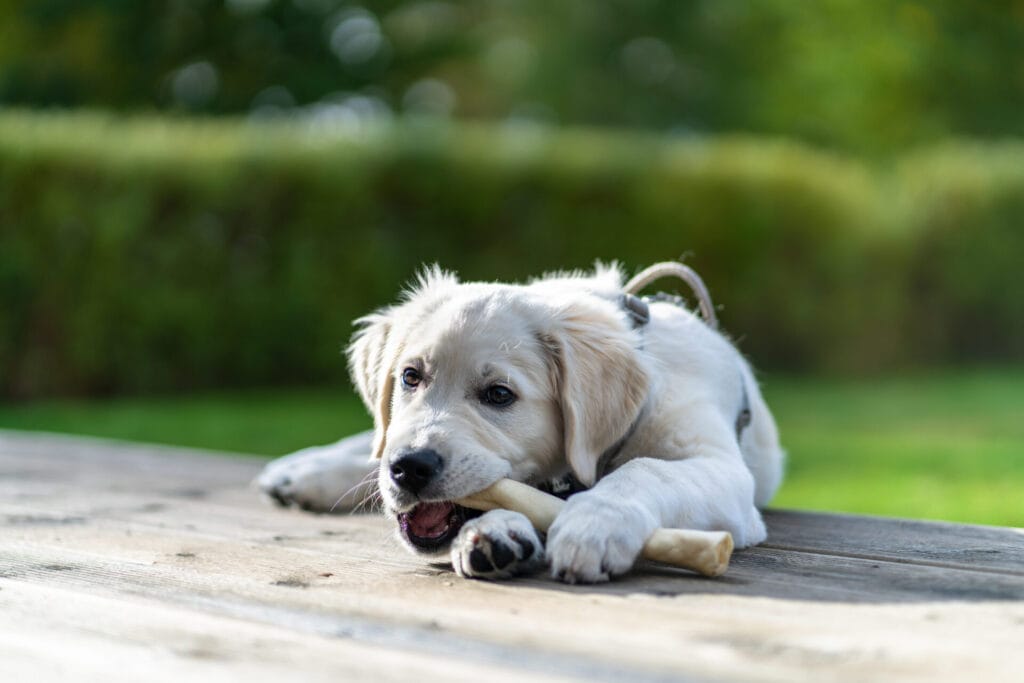Does your dog ever get protective of their food bowl or a special toy? Resource guarding, where dogs guard food, toys, beds, or other items from other animals or people, is a natural but challenging behavior. This instinct can be alarming and frustrating for dog owners.
What is Resource Guarding?
Resource guarding occurs when dogs protect something they have and don’t want to share. This behavior often begins with growling and can escalate to lunging, snarling, snapping, or even biting if the perceived threat approaches closer. Dogs guard things they find valuable, like treats, food, and toys, to keep others away.
Why Do Dogs Resource Guard?
Dogs resource guard because they feel protective over something they possess and do not want to share. Although stressful for owners, this behavior is normal for dogs. When a dog growls, snarls, or bites at another animal or person approaching while the dog is chewing on a bone, eating, or playing with a favorite toy, it’s their way of communicating a need for space.
What Do Dogs Protect?
Resource guarding varies based on what a dog finds valuable. Some dogs guard food, treats, and bones, while others may protect their toys or beds. Additionally, some dogs guard their owners, not wanting other dogs to get too close. Essentially, dogs guard whatever they value.
How to Prevent Resource Guarding
Prevention is crucial in managing resource guarding. Ensure your dog never feels they are in a situation where resources are scarce. One effective strategy is to feed dogs and provide high-value treats like bones and chews in separate, private areas. If you have multiple dogs, consider feeding meals in crates or different rooms to prevent one dog from finishing early and investigating another’s bowl. Similarly, ensure people, especially children, leave dogs alone when they are eating or chewing on toys. Providing space and privacy helps reduce or eliminate the need for dogs to guard their treasures.

Teach Trade
Sometimes, you may need to take something away from your dog. Instead of wrestling it away, teach your dog to trade. This preventative behavior works well for dogs without existing resource guarding issues. To teach this, use high-value treats your dog rarely gets. When your dog is playing with a toy, show them the treat and praise them when they drop the toy to take the treat. Introduce a verbal cue like “give” or “trade.” Practice regularly, rewarding your dog each time they drop what they have. This builds a history of positive exchanges, making it easier to take items from your dog in the future.
Don’t Punish Dogs for Guarding
Never punish a dog for resource guarding. Punishment doesn’t address the underlying feelings causing the behavior and can make it worse. Dogs usually start with growling as a warning. Punishing this warning can lead them to escalate directly to snapping or biting. Growling is a sign of discomfort, and punishing it can remove this warning system, increasing the risk of a bite.
Get Support
If your dog is resource guarding from other pets or people, seek professional support. A positive reinforcement-based trainer can help assess your dog’s behavior and create a management and training strategy. Resource guarding can be managed with support and a comprehensive plan but rarely improves on its own.




















